#Associated American Artists
Text
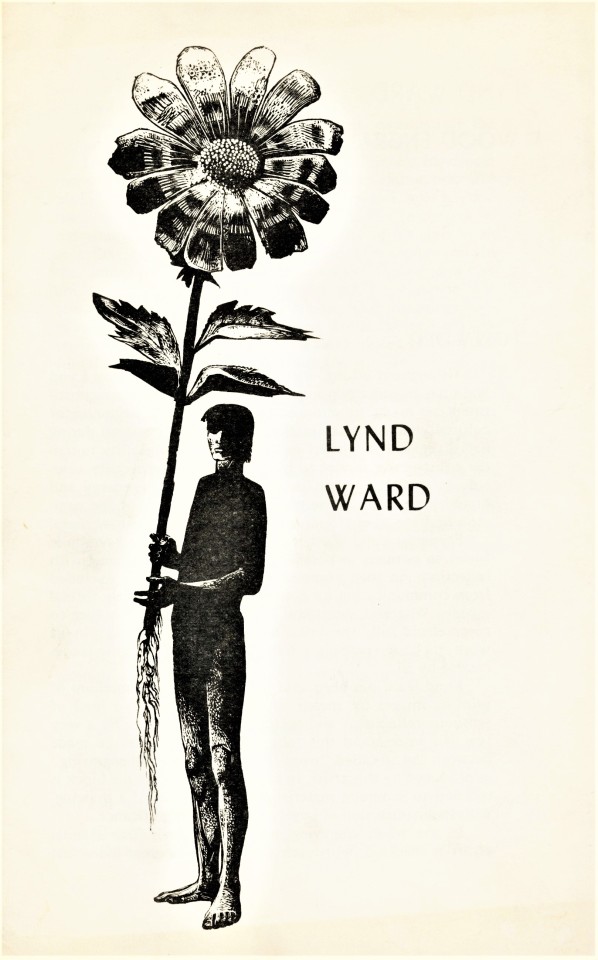




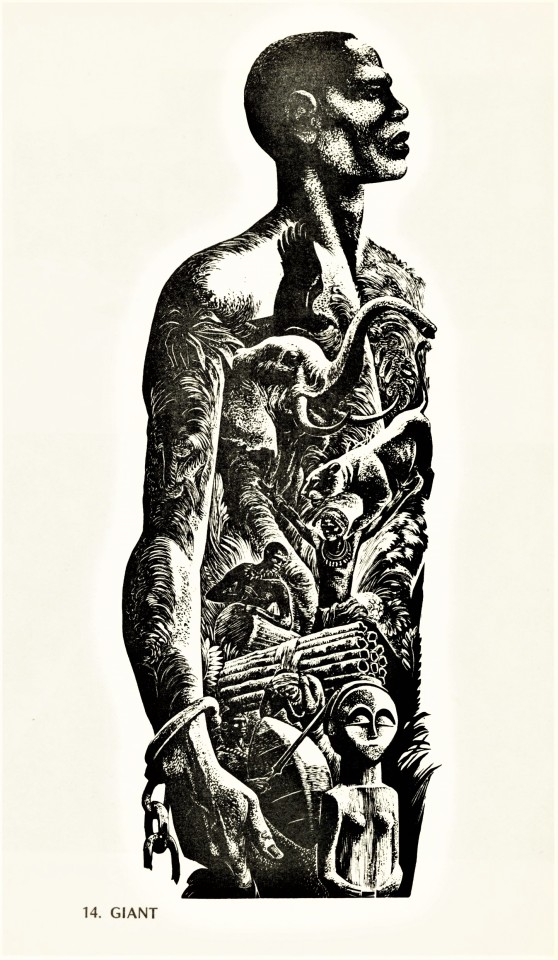
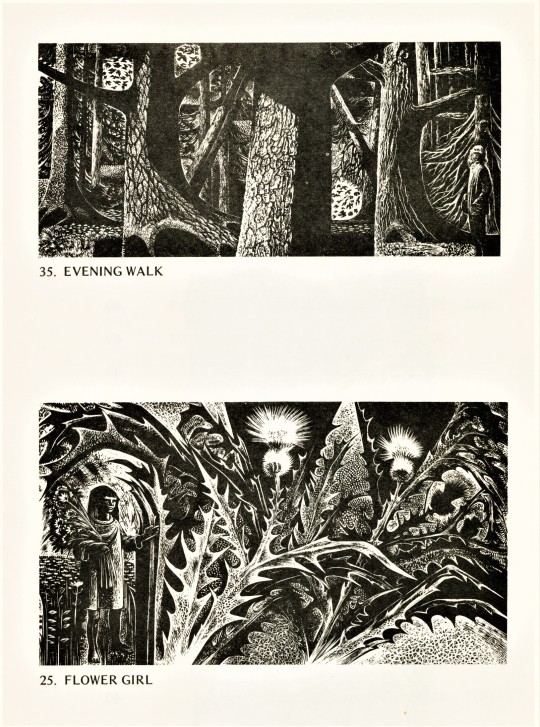


Milestone Monday
On this day, June 26 in 1905, the American illustrator, wood engraver, lithographer, and wordless novelist Lynd Ward was born in Chicago, Illinois, the second child of Harry F. Ward, the first chairman of the American Civil Liberties Union. Lynd Ward, who died in 1985, had a long, distinguished career as an illustrator and designer, and his six very popular wordless novels strongly influenced the development of the graphic novel.
To celebrate this milestone, we present all the wood engravings reproduced in Lynd Ward Wood Engravings 1929-1974, the catalog of a retrospective exhibition of Ward's prints mounted by the Associated American Artists in New York City, May 13-31, 1974, in conjunction with the publication of Storyteller Without Words: The Wood Engravings of Lynd Ward, published by Harry N. Abrams. The exhibition presented 46 of Ward's prints. Our copy of the catalog is yet another gift from our friend Jerry Buff.
View more of our posts with work by Lynd Ward.
View other Milestone Monday posts.
#Milestone Monday#milestones#birthdays#Lynd Ward#wood engravings#wood engravers#Lynd Ward Wood Engravings 1929-1974#exhibition catalogs#Associated American Artists#Jerry Buff
79 notes
·
View notes
Text
Everybody learns at their own pace everybody learns in their own time everybody everybody learns at the time best for them everybody-
#.txt#AGONIZING#the desire to improve right.this. second to unattainable degrees is crushing me oh nature cleooo#so many skilled artists and writers to be inspired from and motivated by#I REALIZE its like. all 20-smiths but I just love their stuff so much TT#and look. I still have to do my yearly america cringe post redraw and I’m excited BUT LAST YEAR I literally preferred the previous#and writing again and realizing I might have REGRESSED?!?!? from 2021?!?!? well maybe not BUT#its a tough lesson to learn that just because you age you don’t improve things you associate ur identity with if. you don’t. PRACTICE#like idk#anatomy not good enough#dialogue not good enough#not doing trends means less acknowledgement and that HURTS but I just don’t like making shit idc about it so it doesn’t feel worth it#going to college and realize it ur gonna have to stop being a kid and being ok with inadequacy#loving talking to fandom ppl but thinking oh ill never be as charismatic never be as interesting or as knowledgeable about history and#lighting#PEOPLE SHOULDNT COMPARE THEMSELVES TO THOSE 5+ YEARS OLDER bc DUH they’re gonna often be better#I just. havin a creative bump where it feels like ill never bring my ideas to as good fruitation as others can#well. um. yea if that’s about it. I’m gonna go plan for tomorrows usual week comic cuz I’m flying to England at 5pm and wont have time/bars#ill be in Europe for the next three weeks and I’m very excited#just feeling all around inadequate if cuz Europeans often judge you REALLY harsh when they find out your American#I just need to POWER THOUGH and have a good time and make the comics and write the stories I wanna write#cuz that’s all I can do and the only way to get better at walking is to walk the walk
13 notes
·
View notes
Text
honestly lrb i have had no interaction with mitski fans & i hope it stays that way but the ridiculous bog prince / fae king / etc shit hozier fans have going on makes me feel violent <3
#ophelia.txt#i ranted to rachel abt this but the specific association people have w him and irish folklore just because he’s an irish artist#rubs me entirely the wrong way bc it feels like it’s feeding into the idea that the irish are primitive and uncivilised#which is the most english bullshit i’ve ever heard. anyway let the fae king narrative die and let the fae stay in irish mythology.#where they belong lmao#does this make sense? idk and idc actually i hate h*zier fans#NOT TO MENTION they undermine the political & activist aspects of his music when they do that + the homages he pays to esp black american#musicians who literally created the blues & rock genres - which are what a lot of his music is
11 notes
·
View notes
Text
I continue to be. So Fucking Tired Of People
#today it's about multiple things#- customers who don't understand that custom-made products cannot materialize instantly into their hands#- managers who don't understand that#''i can stay late to help with your personal emergency''#does not mean#''get us both in trouble by keeping me overtime for shit that neither of us are responsible for and isn't due for over a week''#- american culture in general that has to have menial things Right Now but anything important is put off until people start dying#- and i love coming home from all of this to find more fucking witch-hunting on my dashboard#because when it's bigoted scenes in marvel movies and nintendo games we can apparently just go ''oh that was bad'' and shrug it off#but as soon as it's indie it's murder by association. as if every fan was on the board of directors and knows the artist personally#god forbid i finish the game i bought before i discovered the dev sucks#i love fucking lupin iii blogs preaching to me. like. buddy. you've got nazi apologists#fish babblings
5 notes
·
View notes
Text
New WHERE THE LEMON TREES BLOOM 35- I know the series is the fav of some:)

#painting#lemons#Kim McAninch#goethe#travel#travelinspiration#sarasota florida#longboat key#american artists#national association of women artists
2 notes
·
View notes
Text
This is such an important watch: it's not just about Goop- he mentions sexism in our medical system in my country (USA).
youtube
#sexism in medicine#misinformation#goop#disabled#melody morningdew art#chronic illness#chronically ill#furry artist#chronic disability#chronic pain#female furry#disability#disability advocacy#diagnosis#disabled furry#cancer#sexism#feminism#american medical association#undiagnosed chronic illness#undiagnosed chronic pain#chronically fatigued#chronic migraines#chronic migraine#chronic fatigue#chronic disease#disabilties#Youtube
0 notes
Text
NAMM 2024 – A Defining Moment for the Music Industry?
As the 2024 NAMM Show draws near, the music world buzzes with excitement. Set in Anaheim, California, from January 25-28, the event promises a convergence of music enthusiasts, tech innovators, and industry mavens. NAMM has always been more than just a trade show; it’s a barometer for the industry’s health and a showcase of the latest in music technology and trends.
NAMM 2024: A Tumultuous Past…

View On WordPress
#American Musical Supply#Anaheim#Anaheim Convention Center#Andertons#Artists#California#COVID#Dealers#Digital#EART#Educators#Fender#Gibson#Global#Guitar Centre#Howl Guitars#Ibanez#Influencers#Instagram#Jet Guitars#JHS#John Mlynczak#Josh Scott#media#Music Industry#Music Retail#NAMM 2024#National Association of Music Merchants#News#pandemic
0 notes
Text

It's Black History Month! 🖤
Get ready to immerse yourself in a month-long celebration of Black joy, Black excellence, and Black art. Following the Association for the Study of African American Life and History's announcement that the theme for Black History Month 2024 is "African Americans and the Arts," we're thrilled to shine a spotlight on Black creators right here on Tumblr.
Keep an eye out later this month for an exclusive Artist Alley putting talented Black artists center stage, a Radar brimming with awe-inspiring art by Black creators, emails in your inbox amplifying Black joy, and, of course, a steady stream of daily reblogs here on @blackexcellence.
Are you an artist? (Yes, you are. We are all artists!) You deserve to get in on this! Don't forget to use the tag #Black artists on Tumblr to catapult your posts beyond your usual audience. We're scouring the tag daily to showcase your outstanding art on Radar, reblog it here, or feature it with global promotion.
6K notes
·
View notes
Text
There’s Power in a Union
The United Auto Workers has begun a series of targeted strikes which may expand to most or all of its 145,000 members walking off the job.
The Writers Guild of America has been on strike since May, disrupting pretty much any show with a script. The strike has disrupted everything from the Emmys® to The Drew Barrymore Show.
Even if the shows had scripts, who would learn the lines? The Screen…

View On WordPress
#Actors&039; Equity Association#American Federation of Television and Radio Artists#IATSE#International Alliance of Theatrical Stage Employees#Screen Actors Guild#straz center#strike#unions#United Auto Workers#Writers Guild of America
0 notes
Text
Honestly, it’s non Black poc as well, but a lot of the awful takes I’ve been seeing have been from white people primarily. And I feel like as a mixed race black person, I need to clarify what the fuck Kendrick is saying regarding Drake’s blackness.
When he critiques Drake’s relationship to blackness and his identity, he is not saying that mixed race Black people cannot be black or that “he’s not black because he’s Jewish”, he is saying that Drake has consistently used Black people, blackness, and black culture to further his career and further his capital, while not contributing to the culture overall. Drake has separated himself from other Black people until it became “popular” to be and “act” black. He has shoehorned himself into cultures that he has not been brought up in like when he had this whole era where he would speak in broken patois and use Jamaican American and Jamaican Canadian vernacular and slang despite not having any connection to that culture.
The types of people he surrounds himself with in both in his family and recreationally speak to how he does not see other Black people as his kin. They are either associates or they are fetishized.
Kendrick calling him a colonizer is not a dig at him being Jewish either. It’s a dig at him using hip-hop culture and black culture as a means to become rich. He is literally colonizing an aspect of the culture that is still demonized (hip-hop and rap are still very much demonized as forms of art by wider society) and repackaging it for white people and non-Black people to enjoy and getting rich off of it because he picks and chooses aspects of blackness to present to make money. He is a morally and artistically bankrupt individual.
This is why, unless you fully understand the context of what is happening, Drake’s history as well as the history of hip-hop and rap, you should not have an opinion about this beef. Especially if you’re going to be misinterpreting what is being said by the main protagonist (basically) of this beef.
4K notes
·
View notes
Text
https://www.instagram.com/reel/Cs7VDBmgEyF/?igshid=MTc4MmM1YmI2Ng==
#african/black experience#war on afrikans#protest#African American Control Tobacco Leadership Council#racial profiling#spoken word artists fight back#violence#cancer#heart association
0 notes
Photo


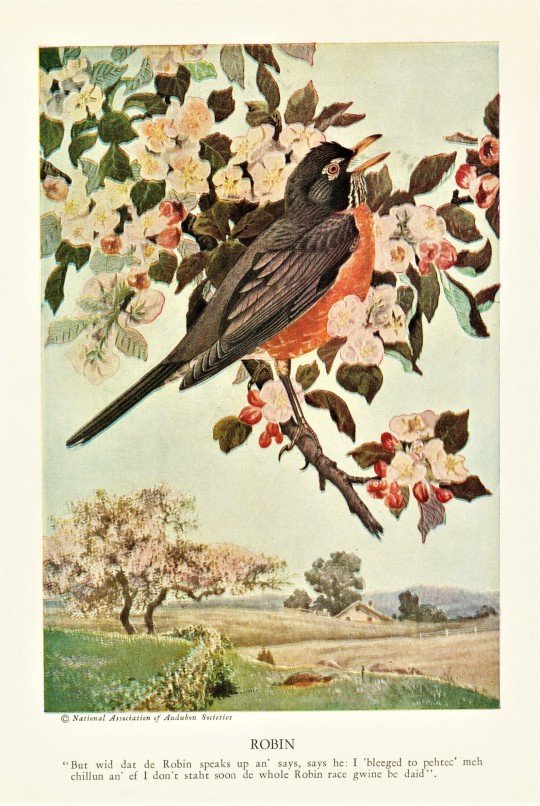
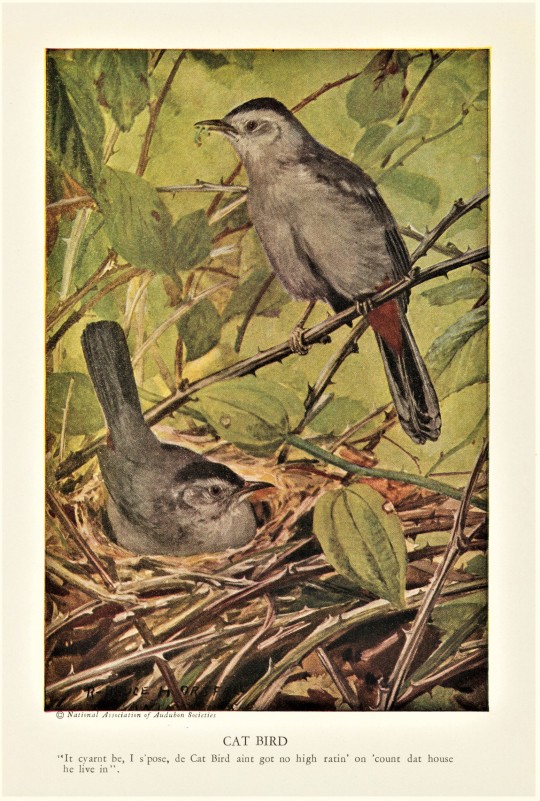
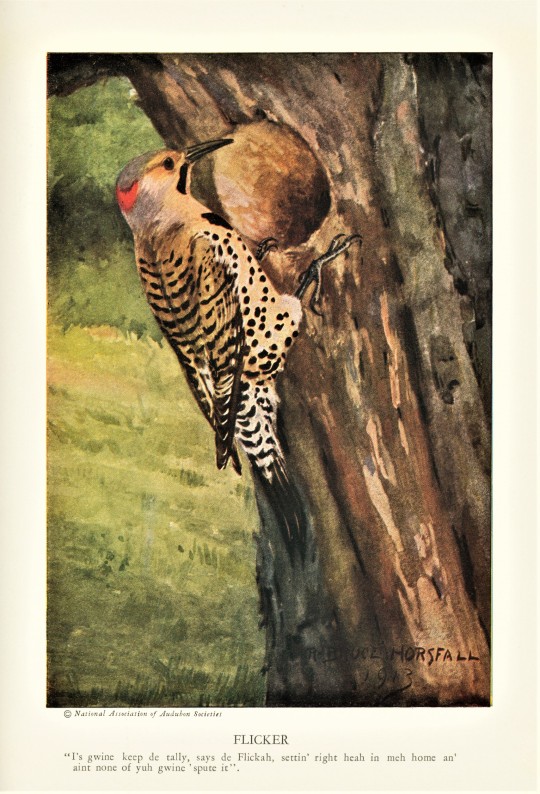

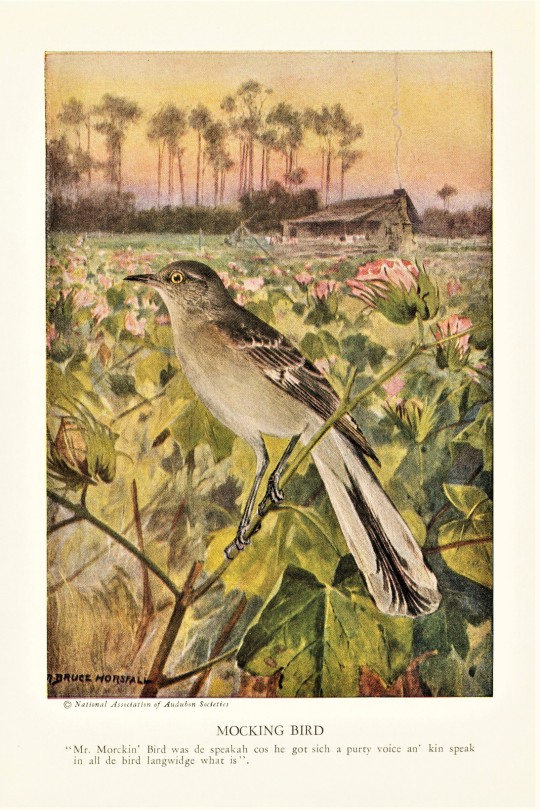
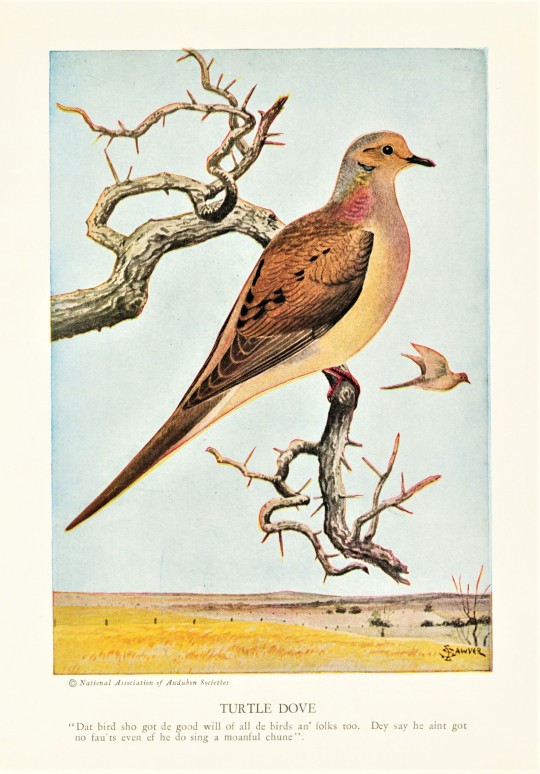
A Not Very PC Feathursday
Author William Edgar Thompson’s use of Southern Black dialect in his self-published book Aunt Chloe and Her Birds, printed for the author by Kingsport Press in Kingsport, Tennessee in 1927, is extremely cringe-worthy, but apparently it was all the rage when it was published. A review of the 1928 second edition observes,
There is something about the negro dialect that fascinates children . . . nor do the children tire of them after they have ceased to be children. Mr. Thompson has taken this method of presenting his bird stories and has done so most successfully. . . . Mr. Thompson's excellent book should have a wide sale. It is not only interesting reading but educational as well and should do much good in spreading an interest in birds and their protection.
Yikes!
However, the book also includes eight excellent color bird illustrations supplied by the National Association of Audubon Societies, two by naturalist and artist Edmund Joseph Sawyer (1880-1971) and the rest by noted wildlife illustrator Robert Bruce Horsfall (1869 –1948). We could find nothing on Thompson except that he authored this book, and we would be curious to learn how the Audubon Society came to supply the illustrations. Each of the images is sub-captioned with one of Aunt Chloe’s folksy observations. We considered editing them out because we just find them uncomfortable, but instead of censoring, we decided to present them as they appear in their historical context. These quotes are quite tame compared to the dialogue in the book, some of which is unapologetically racist.
View more Feathursday posts.
#Feathursday#William Edgar Thompson#Aunt Chloe and Her Birds#Kingsport Press#National Association of Audubon Societies#Audubon Society#Edmund Joseph Sawyer#Robert Bruce Horsfall#bird illustrations#wildlife art#wildlife artists#Black dialect#cringe-worthy prose#Historical Curriculum Collection#Baltimore Oriole#American Robin#Catbird#Blue Jay#Northern Mockingbird#Mourning Dove#birds#birbs!
80 notes
·
View notes
Text
In Defense of Shitty Queer Art
Queer art has a long history of being censored and sidelined. In 1895, Oscar Wilde’s novel The Picture of Dorian Gray was used as evidence in the author’s sodomy trials. From the 1930s to the 1960s, the American Hays Code prohibited depictions of queerness in film, defining it as “sex perversion.” In 2020, the book Steven Universe: End of an Era by Chris McDonnell confirmed that Rebecca Sugar’s insistence on including a sapphic wedding in the show is what triggered its cancellation by Cartoon Network. According to the American Library Association, of the top ten most challenged books in 2023, seven were targeted for their queer content. Across time, place, and medium, queer art has been ruthlessly targeted by censors and protesters, and at times it seems there might be no end in sight.
So why, then, are queer spaces so viciously critical of queer art?
Name any piece of moderately-well-known queer media, and you can find immense, vitriolic discourse surrounding it. Audiences debate whether queer media is good representation, bad representation, or whether it’s otherwise too problematic to engage with. Artists are picked apart under a microscope to make sure their morals are pure enough and their identities queer enough. Every minor fault—real or perceived—is compiled in discourse dossiers and spread around online. Lines are drawn, and callout posts are made against those who get too close to “problematic art.”
Modern examples abound, such as the TV show Steven Universe, the video game Dream Daddy, or the webcomic Boyfriends, but it’s far from a new phenomenon. In his book Hi Honey, I’m Homo!, queer pop culture analyst Matt Baume writes about an example from the 1970s, where the ABC sitcom titled Soap was protested by homophobes and queer audiences alike—before a single episode of the show ever aired. Audiences didn’t wait to actually watch the show before passing judgment and writing protest letters.
After so many years starved for positive representation, it’s understandable for queer audiences to crave depictions where we’re treated well. It’s exhausting to only ever see the same tired gay tropes and subtext, and queer audiences deserve more. Yet the way to more, better, varied representation is not to insist on perfection. The pursuit of perfection is poison in art, and it’s no different when that art happens to be queer.
When the pool of queer art is so limited, it feels horrible when a piece of queer art doesn’t live up to expectations. Even if the representation is technically good, it’s disappointing to get excited for a queer story only for that story to underwhelm and frustrate you.
But the world needs that disappointing art. It needs mediocre art. It even needs the bad art. The world needs to reach a point where queer artists can fearlessly make a mess, because if queer artists can only strive for perfection, the less art they can make. They may eventually produce a masterpiece, but a single masterpiece is still a drop in the bucket compared to the oceans of censorship. The only way to drown out bigotry and offensive stereotypes created by bigots is to allow queer artists the ability to experiment, learn through making mistakes, and represent their queer truth even if it clashes with someone else’s.
If queer artists aren’t allowed to make garbage, we can never make those masterpieces everyone craves. If queer artists are terrified at all times that their art will be targeted both by bigots and their own queer communities, queer art cannot thrive.
Let queer artists make shitty art. Let allies to queer people try their hand at representation, even if they miss the mark. Let queer art be messy, and let the artists screw up without fear of overblown retribution.
It’s the only way we’ll ever get more queer art.
_
Like this essay? Tip me on Ko-Fi, pledge to my Patreon, or commission an essay on the topic of your choice!
2K notes
·
View notes
Text
Johnny Cash - Hurt
2002
"Hurt" is a song by American industrial rock band Nine Inch Nails from their second studio album, The Downward Spiral (1994), written by Trent Reznor. It was released on April 17, 1995, as a promotional single from the album. The song received a Grammy Award nomination for Best Rock Song in 1996.
In 2002, Johnny Cash covered "Hurt" for his final album during his lifetime, to commercial and critical acclaim. Reznor praised Cash's interpretation of the song for its "sincerity and meaning", going so far as to say "that song isn't mine anymore". The single contains a cover of Depeche Mode's "Personal Jesus" as a B-side.
The music video features images from Cash's life, and was named the best video of the year by the Grammy Awards and CMA Awards, and the best video of all time by NME in July 2011.
When the video was filmed in February 2003, Cash was 71 years old and had serious health problems. His frailty is clearly evident in the video. He died seven months later, on September 12.
The Johnny Cash cover was given the Country Music Association award for "Single of the Year" in 2003. It ranked as CMT's top video for 2003, No. 1 on CMT's 100 Greatest Country Music Videos the following year (and again in 2008), and No. 1 on the Top 40 Most Memorable Music Videos on MuchMoreMusic's Listed in October 2007. As of March 2016, the single occupies the number nine spot on Rate Your Music's Top Singles of the 2000s. The song is also Cash's sole chart entry on the Billboard Modern Rock Tracks chart, where it hit No. 33 in 2003. In June 2009, the song was voted No. 1 in UpVenue's Top 10 Best Music Covers.
"Hurt" was nominated for six awards at the 2003 MTV Video Music Awards, winning for Best Cinematography. With the video, Johnny Cash became the oldest artist ever nominated for an MTV Video Music Award.
The music video won the 2004 Grammy Award for Best Short Form Music Video.
In a 2014 survey conducted by the BBC the UK public voted the Johnny Cash version the second greatest cover version (of any song) of all time.
"Hurt" received a total of 76,3% yes votes!
youtube
2K notes
·
View notes
Text
So I accidentally almost got into an argument on Twitter, and now I'm thinking about bad historical costuming tropes. Specifically, Action Hero Leather Pants.
See, I was light-heartedly pointing out the inaccuracies of the costumes in Black Sails, and someone came out of the woodwork to defend the show. The misunderstanding was that they thought I was dismissing the show just for its costumes, which I wasn't - I was simply pointing out that it can't entirely care about material history (meaning specifically physical objects/culture) if it treats its clothes like that.
But this person was slightly offended on behalf of their show - especially, quote, "And from a fan of OFMD, no less!" Which got me thinking - it's true! I can abide a lot more historical costuming inaccuracy from Our Flag than I can Black Sails or Vikings. And I don't think it's just because one has my blorbos in it. But really, when it comes down to it...
What is the difference between this and this?
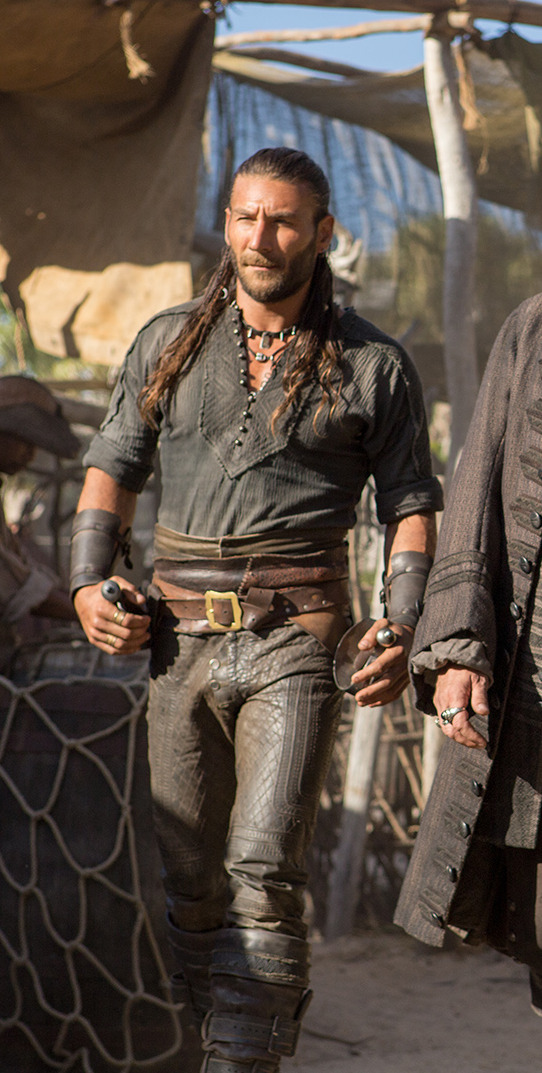
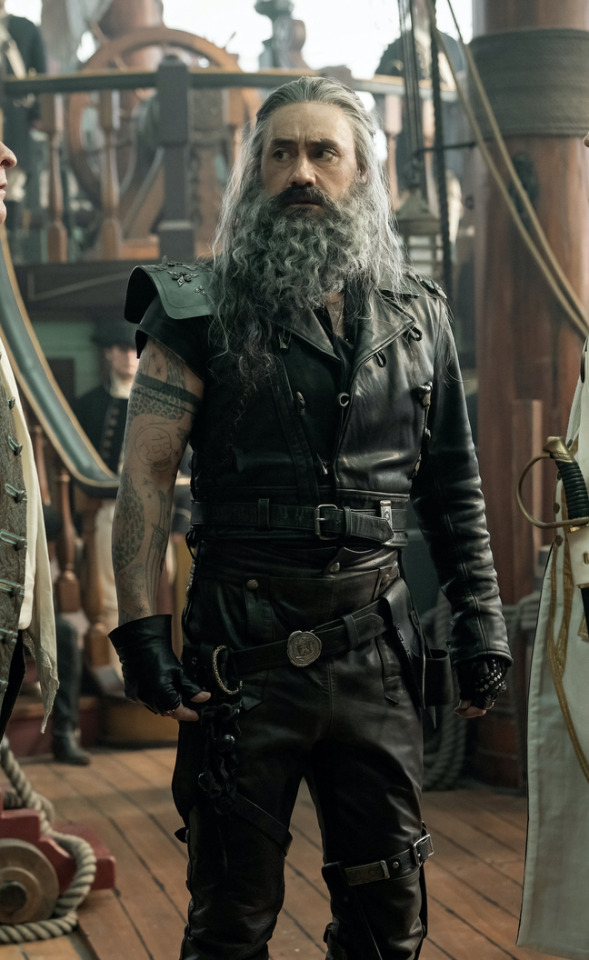
Here's the thing. Leather pants in period dramas isn't new. You've got your Vikings, Tudors, Outlander, Pirates of the Caribbean, Once Upon a Time, Will, The Musketeers, even Shakespeare in Love - they love to shove people in leather and call it a day. But where does this come from?

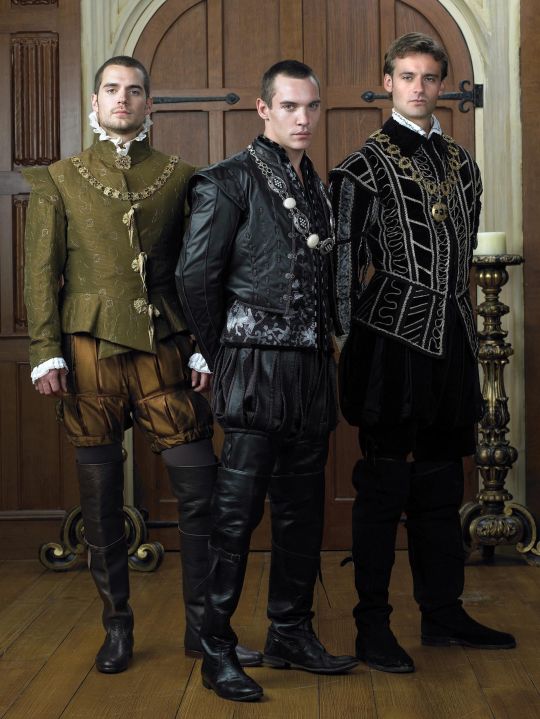
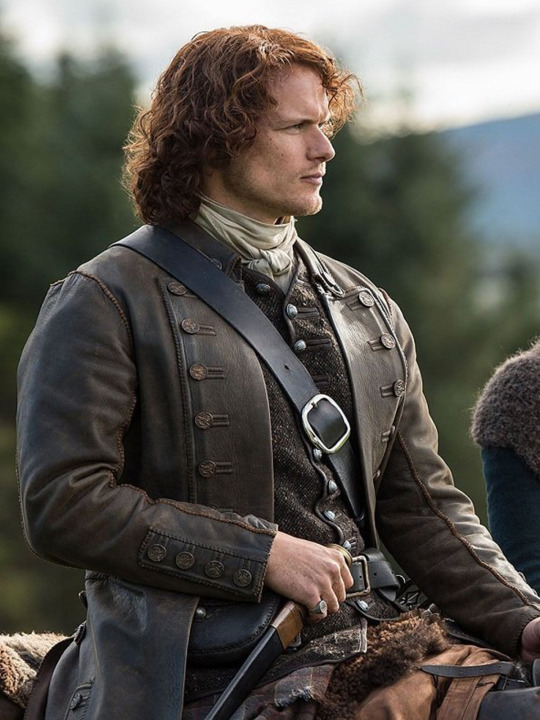

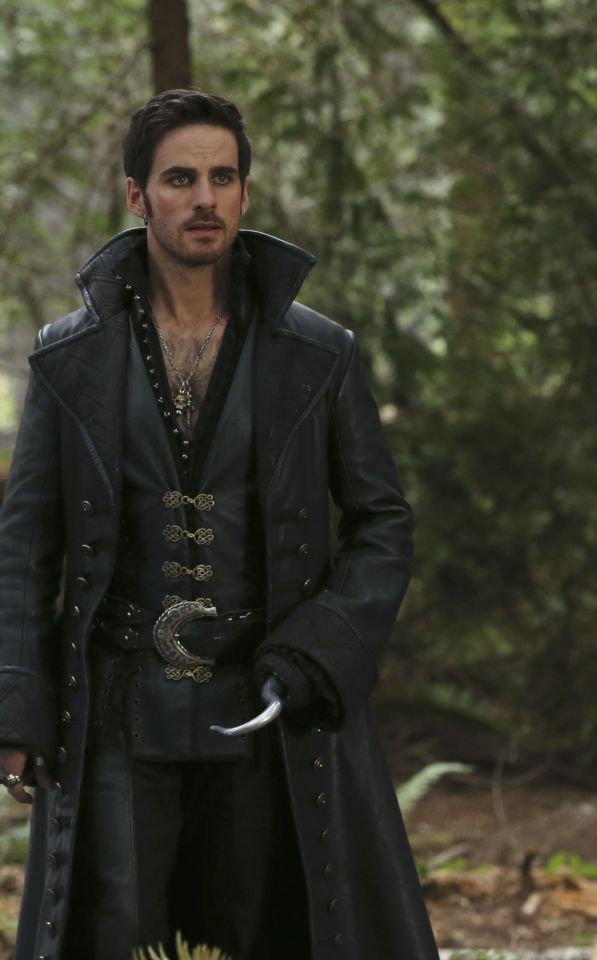
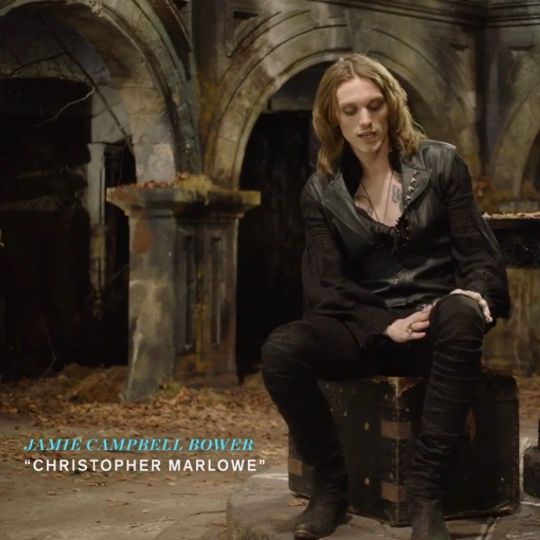
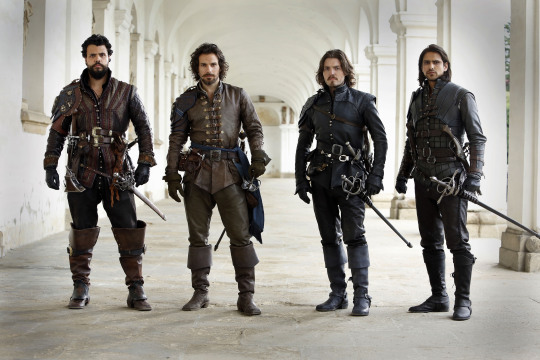

Obviously we have the modern connotations. Modern leather clothes developed in a few subcultures: cowboys drew on Native American clothing. (Allegedly. This is a little beyond my purview, I haven't seen any solid evidence, and it sounds like the kind of fact that people repeat a lot but is based on an assumption. I wouldn't know, though.) Leather was used in some WWI and II uniforms.
But the big boom came in the mid-C20th in motorcycle, punk/goth, and gay subcultures, all intertwined with each other and the above. Motorcyclists wear leather as practical protective gear, and it gets picked up by rock and punk artists as a symbol of counterculture, and transferred to movie designs. It gets wrapped up in gay and kink communities, with even more countercultural and taboo meanings. By the late C20th, leather has entered mainstream fashion, but it still carries those references to goths, punks, BDSM, and motorbike gangs, to James Dean, Marlon Brando, and Mick Jagger. This is whence we get our Spikes and Dave Listers in 1980s/90s media, bad boys and working-class punks.


And some of the above "historical" design choices clearly build on these meanings. William Shakespeare is dressed in a black leather doublet to evoke the swaggering bad boy artist heartthrob, probably down on his luck. So is Kit Marlowe.
But the associations get a little fuzzier after that. Hook, with his eyeliner and jewellery, sure. King Henry, yeah, I see it. It's hideously ahistorical, but sure. But what about Jamie and Will and Ragnar, in their browns and shabby, battle-ready chic? Well, here we get the other strain of Bad Period Drama Leather.
See, designers like to point to history, but it's just not true. Leather armour, especially in the western/European world, is very, very rare, and not just because it decays faster than metal. (Yes, even in ancient Greece/Rome, despite many articles claiming that as the start of the leather armour trend!) It simply wasn't used a lot, because it's frankly useless at defending the body compared to metal. Leather was used as a backing for some splint armour pieces, and for belts, sheathes, and buckles, but it simply wasn't worn like the costumes above. It's heavy, uncomfortable, and hard to repair - it's simply not practical for a garment when you have perfectly comfortable, insulating, and widely available linen, wool, and cotton!
As far as I can see, the real influence on leather in period dramas is fantasy. Fantasy media has proliferated the idea of leather armour as the lightweight choice for rangers, elves, and rogues, a natural, quiet, flexible material, less flashy or restrictive than metal. And it is cheaper for a costume department to make, and easier for an actor to wear on set. It's in Dungeons and Dragons and Lord of the Rings, King Arthur, Runescape, and World of Warcraft.

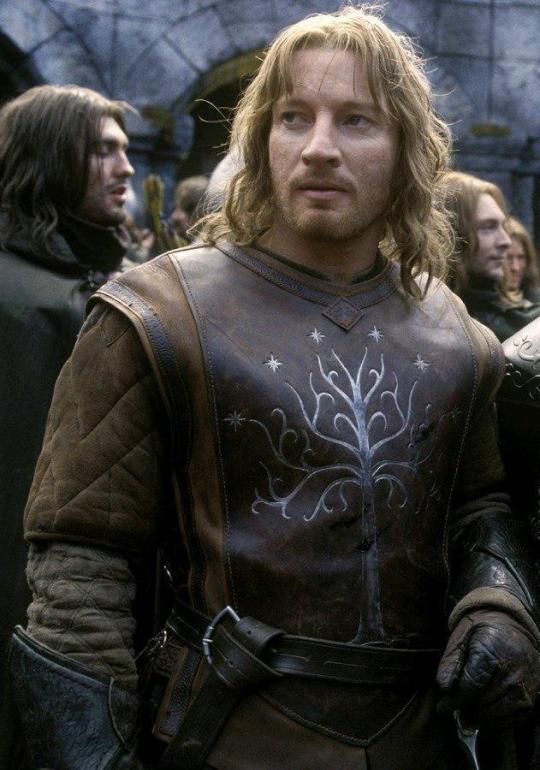
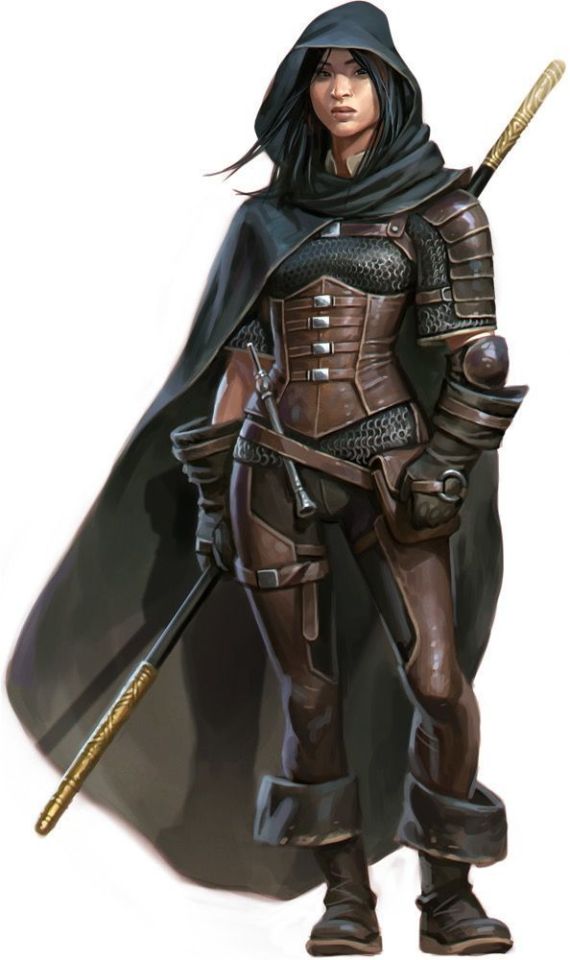
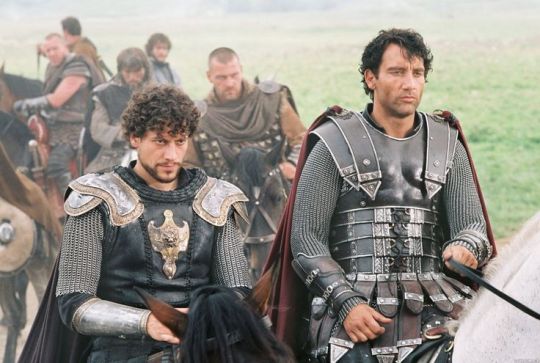

And I think this is how we get to characters like Ragnar and Vane. This idea of leather as practical gear and light armour, it's fantasy, but it has this lineage, behind which sits cowboy chaps and bomber/flight jackets. It's usually brown compared to the punk bad boy's black, less shiny, and more often piecemeal or decorated. In fact, there's a great distinction between the two Period Leather Modes within the same piece of media: Robin Hood (2006)! Compare the brooding, fascist-coded villain Guy of Gisborne with the shabby, bow-wielding, forest-dwelling Robin:

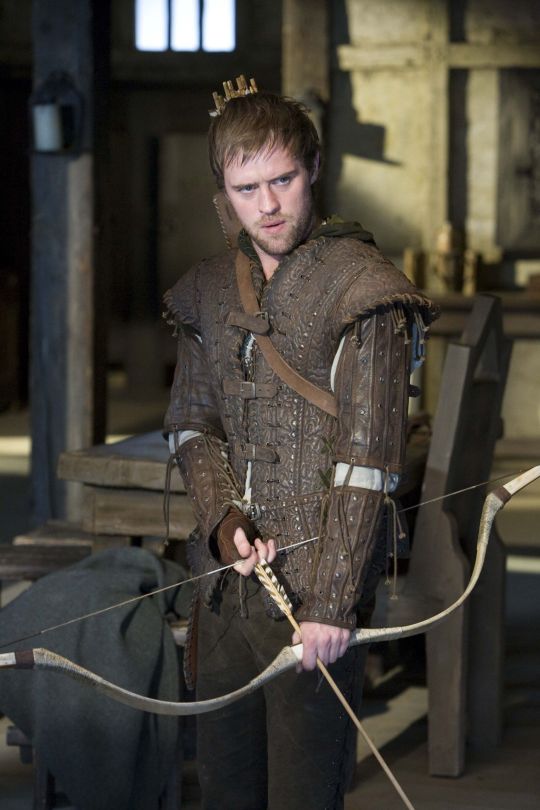
So, back to the original question: What's the difference between Charles Vane in Black Sails, and Edward Teach in Our Flag Means Death?
Simply put, it's intention. There is nothing intentional about Vane's leather in Black Sails. It's not the only leather in the show, and it only says what all shabby period leather says, relying on the same tropes as fantasy armour: he's a bad boy and a fighter in workaday leather, poor, flexible, and practical. None of these connotations are based in reality or history, and they've been done countless times before. It's boring design, neither historically accurate nor particularly creative, but much the same as all the other shabby chic fighters on our screens. He has a broad lineage in Lord of the Rings and Pirates of the Caribbean and such, but that's it.
In Our Flag, however, the lineage is much, much more intentional. Ed is a direct homage to Mad Max, the costuming in which is both practical (Max is an ex-cop and road warrior), and draws on punk and kink designs to evoke a counterculture gone mad to the point of social breakdown, exploiting the thrill of the taboo to frighten and titillate the audience.
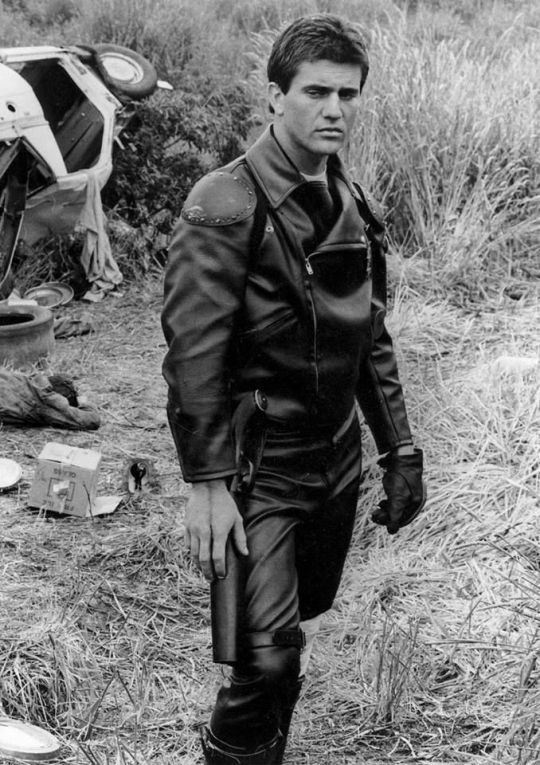
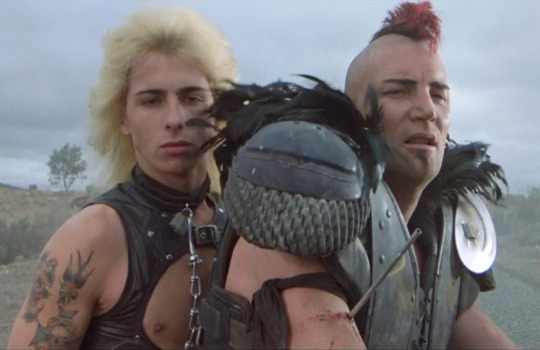
In particular, Ed is styled after Max in the second movie, having lost his family, been badly injured, and watched the world turn into an apocalypse. He's a broken man, withdrawn, violent, and deliberately cutting himself off from others to avoid getting hurt again. The plot of Mad Max 2 is him learning to open up and help others, making himself vulnerable to more loss, but more human in the process.

This ties directly into the themes of Our Flag - it's a deliberate intertext. Ed's emotional journey is also one from isolation and pain to vulnerability, community, and love. Mad Max (intentionally and unintentionally) explores themes of masculinity, violence, and power, while Max has become simplified in the popular imagination as a stoic, badass action hero rather than the more complex character he is, struggling with loss and humanity. Similarly, Our Flag explores masculinity, both textually (Stede is trying to build a less abusive pirate culture) and metatextually (the show champions complex, banal, and tender masculinities, especially when we're used to only seeing pirates in either gritty action movies or childish comedies).
Our Flag also draws on the specific countercultures of motorcycles, rockers, and gay/BDSM culture in its design and themes. Naturally, in such a queer show, one can't help but make the connection between leather pirates and leather daddies, and the design certainly nods at this, with its vests and studs. I always think about this guy, with his flat cap so reminiscient of gay leather fashions.

More overtly, though, Blackbeard and his crew are styled as both violent gangsters and countercultural rockstars. They rove the seas like a bikie gang, free and violent, and are seen as icons, bad boys and celebrities. Other pirates revere Blackbeard and wish they could be on his crew, while civilians are awed by his reputation, desperate for juicy, gory details.
This isn't all of why I like the costuming in Our Flag Means Death (especially season 1). Stede's outfits are by no means accurate, but they're a lot more accurate than most pirate media, and they're bright and colourful, with accurate and delightful silks, lace, velvets, and brocades, and lovely, puffy skirts on his jackets. Many of the Revenge crew wear recognisable sailor's trousers, and practical but bright, varied gear that easily conveys personality and flair. There is a surprising dedication to little details, like changing Ed's trousers to fall-fronts for a historical feel, Izzy's puffy sleeves, the handmade fringe on Lucius's red jacket, or the increasing absurdity of navy uniform cuffs between Nigel and Chauncey.
A really big one is the fact that they don't shy away from historical footwear! In almost every example above, we see the period drama's obsession with putting men in skinny jeans and bucket-top boots, but not only does Stede wear his little red-heeled shoes with stockings, but most of his crew, and the ordinary people of Barbados, wear low boots or pumps, and even rough, masculine characters like Pete wear knee breeches and bright colours. It's inaccurate, but at least it's a new kind of inaccuracy, that builds much more on actual historical fashions, and eschews the shortcuts of other, grittier period dramas in favour of colour and personality.
But also. At least it fucking says something with its leather.
#everyone say 'thank you togas' for not including a long tangent about evil rimmer in red dwarf 5x05#Our Flag Means Death#Togas does meta#and yes these principles DO fall apart slightly in s2 and i DON'T like those costumes as much#don't get me wrong they're fun and gorgeous - but generally a bit less deep and more inaccurate. so. :(#I'm not sure this really says anything new about Our Flag but I just needed to get my thoughts out#i hate hate hate Gritty Period Drama costumes they're so boring and so ugly and so wrong#god bless OFMD for using more than 3 muted colours and actually putting men in heels (and not as a shorthand for rich/foppish villainy) <3#looking at that Tudors still is insane like they really will go to any lengths to not make men feel like they've got bare legs XD#image descriptions in alt text#and yes i DID just sink about two hours into those so you'd better appreciate them
1K notes
·
View notes
Text
Anne Goldthwaite
Anna Goldthwaite Self Portrait
The artist I am showcasing today is a lady who hailed from the American Deep South. Anne Wilson Goldthwaite was born into a genteel Montgomery, Alabama family on June 28th, 1869. She was a true daughter of the South and the oldest of four siblings. Her father was Richard Wallach Goldthwaite, who served as an artillery captain for the Confederacy during the Civil…

View On WordPress
#Academy Moderne#American artists#American Girls Art Club Paris#American Woman&039;s Art Association#Anne Goldthwaite#Art#Art History#Female painters#Gertrude Stein
0 notes